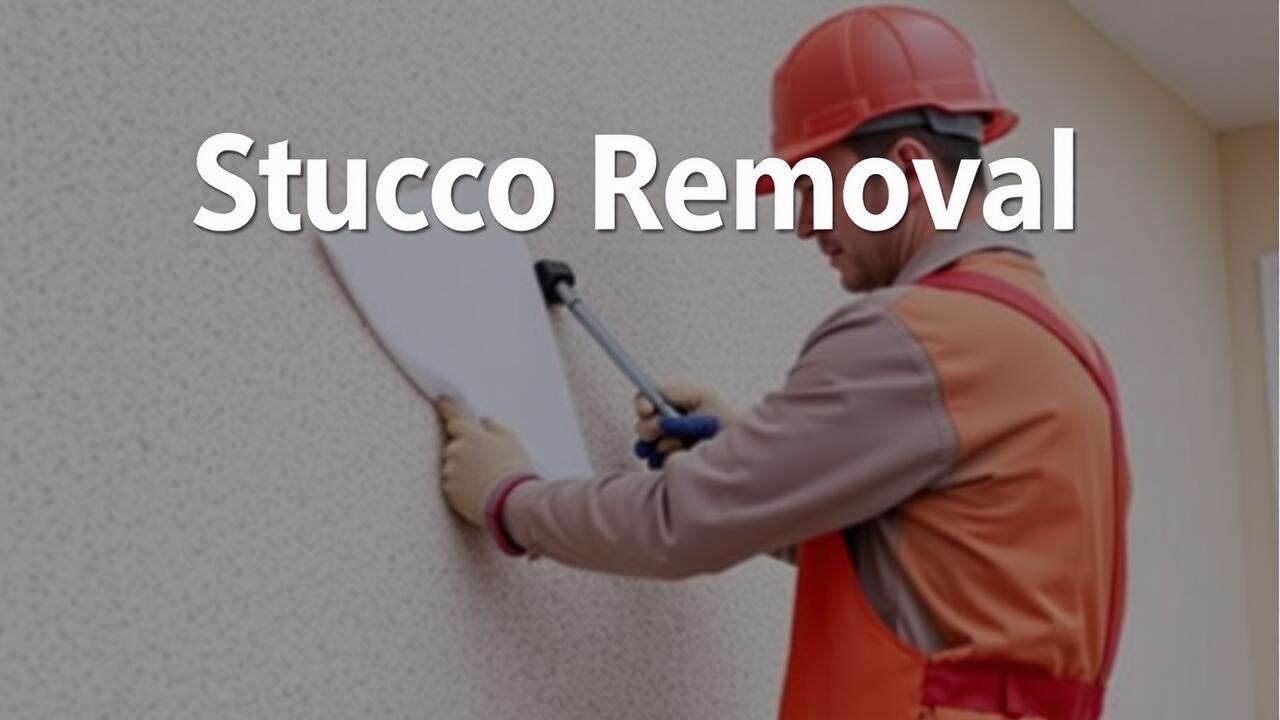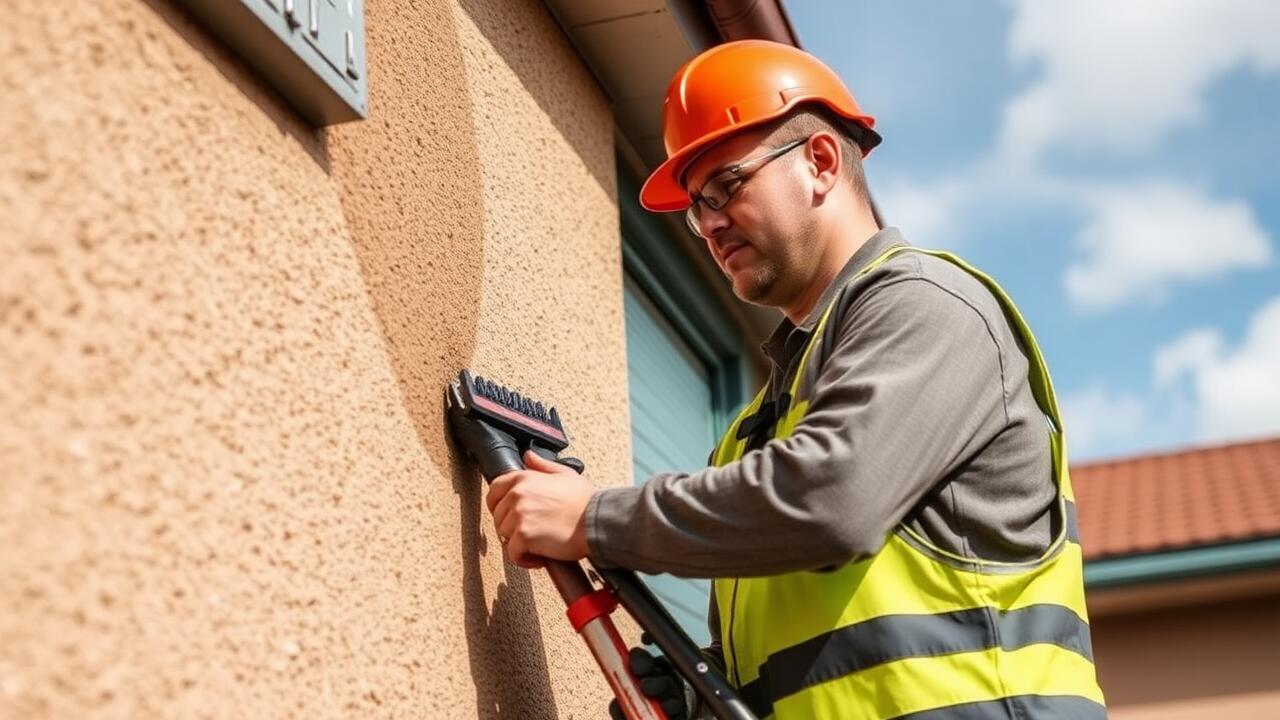
Minimizing Damage to Underlying Structures
When undertaking stucco removal, careful methods can significantly reduce the risk of damaging the underlying structures. Utilizing appropriate tools is essential. A stucco chisel or similar instrument designed for the job can help target the stucco without exerting excessive force. Work in small sections, systematically removing the stucco to maintain control and avoid sudden impacts that can harm the wall underneath.
In addition to using the right tools, assessing the condition of the underlying surface before removal can inform your approach. If the walls exhibit signs of weakness or prior damage, additional precautions may be necessary. Enlisting the help of professionals skilled in Encino, Los Angeles Stucco Removal can ensure that the integrity of the structure is preserved during the removal process. Their expertise helps in identifying potential issues early on, preventing more extensive repairs later.
Best Practices During Removal
When embarking on the task of stucco removal, it is crucial to prepare the work area meticulously. Start by covering windows, doors, and any nearby surfaces to protect them from debris and dust. Using drop cloths and sturdy plastic sheeting can help contain the mess. Employing the right tools, such as a chisel, hammer, or power washer, can significantly ease the removal process. Each method comes with its own set of advantages, so having a plan in place is essential for achieving minimal damage.
In addition to protecting surfaces, maintaining a steady approach while removing stucco is vital. Work in manageable sections, ensuring that the removal tool does not dig too deep or cause harm to the underlying structure. Keeping a close eye on any potential cracks or damage during the process will make addressing issues easier. By adhering to these best practices, the task of Encino, Los Angeles stucco removal can be handled efficiently and safely, leading to better outcomes for the following stages of renovation.
Dealing with Cracks and Repairing Damage
Cracks can often emerge during stucco removal, revealing underlying issues in the structure. It’s essential to assess the extent of these cracks before beginning repairs. Small surface cracks might only need patching with a suitable compound designed for stucco, while larger cracks may indicate a deeper problem that requires professional assessment. Ensuring a stable foundation for any new layers of stucco is crucial, as this can prevent further complications down the line.
After addressing cracks, the next step involves repairing any damage to the underlying surfaces. This may include reapplying a moisture barrier or reinforcing lath to enhance stability. In Encino, Los Angeles stucco removal projects, it’s important to consider local climate conditions when planning repairs. A thorough check of the surface will help ensure that all damaged areas are adequately fixed. This attention to detail minimizes the risk of moisture infiltration and helps maintain the integrity of the structure.
Fixing Issues After Removal
Addressing any issues that arise after stucco removal is essential to restoring the integrity of the underlying structure. Homeowners often find cracks and imperfections in the wall surface once the stucco is removed. These blemishes can undermine the appearance and functionality of the structure. In areas like Encino, Los Angeles, maintaining a cohesive look is important, so it’s advisable to repair these imperfections promptly using appropriate patching materials and techniques.
Once the repairs are completed, consider applying a primer or sealant to ensure a uniform surface for painting or reapplication of siding. This step can help prevent moisture infiltration and enhance the longevity of the new finish. If the original stucco was part of a textured finish, replicate that texture with specialized products or techniques. Engaging a professional familiar with the nuances of Encino, Los Angeles stucco removal can ensure a seamless integration with the existing architecture.
Proper Disposal of Stucco Materials
Proper disposal of stucco materials is crucial for both environmental and regulatory compliance. Many areas, including Encino, Los Angeles, have specific guidelines regarding the disposal of construction waste. It is essential to check local regulations to ensure that stucco debris is properly handled. Reusing or recycling stucco whenever possible can help minimize landfill contributions. Certain components of stucco may be recyclable, so it’s beneficial to investigate local recycling facilities that accept such materials.
When disposing of stucco, it is advisable to use dedicated dumpsters or containers specifically designed for construction debris. This not only aids compliance with local regulations but also keeps the worksite organized and safe. Hiring a professional for Encino, Los Angeles stucco removal can sometimes alleviate the burden of disposal, as many companies offer waste removal services as part of their package. This allows homeowners to focus more on the renovation process while ensuring that the waste is managed properly.
Environmental Considerations and Local Regulations
When planning a stucco removal project, it's crucial to understand local regulations and environmental considerations. Many regions have specific guidelines regarding the disposal of construction materials. In areas like Encino, Los Angeles, homeowners must ensure that any hazardous materials are properly categorized and removed in accordance with state laws. This may involve obtaining permits or scheduling inspections to prevent any violations and ensure compliance with environmental standards.
Additionally, many municipalities emphasize sustainability practices during construction and demolition projects. Reusing or recycling stucco materials can align with eco-friendly goals. In Encino, Los Angeles stucco removal professionals often provide options for recycling, reducing landfill waste and promoting responsible disposal methods. Understanding these regulations not only helps you stay compliant but also contributes to a more sustainable community.
FAQS
What are the best methods for removing stucco without damaging the underlying structures?
To minimize damage during stucco removal, it's best to use a combination of hand tools like chisels and hammers, along with a power washer set to a low pressure. Always start at a corner and work your way in to control the removal process better.
What safety precautions should I take while removing stucco?
Always wear safety goggles, gloves, and a dust mask to protect yourself from debris and dust. Ensure proper ventilation in the workspace and consider using a hard hat if you're working in an area where falling debris may occur.
How can I repair cracks or damage after stucco removal?
After removing stucco, inspect the surface for cracks or damage. Use a patching compound or filler specifically designed for the type of underlying material you have, and ensure the area is clean and dry before application for the best adhesion.
What should I do with the stucco materials once they are removed?
Proper disposal of stucco materials depends on local regulations. Generally, you can take it to a municipal waste facility, but check for specific guidelines on hazardous materials if the stucco contains any.
Are there any environmental considerations when removing stucco?
Yes, ensure that the removal process complies with local environmental regulations. This may include managing dust, disposing of materials responsibly, and avoiding the use of harmful chemicals that could pollute the surrounding area.
